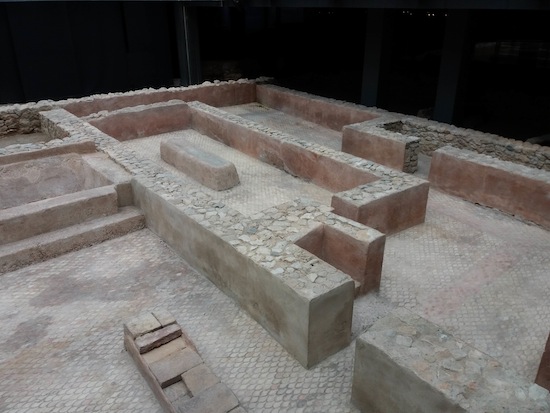Archaeological Discoveries Beneath Valencia, Spain
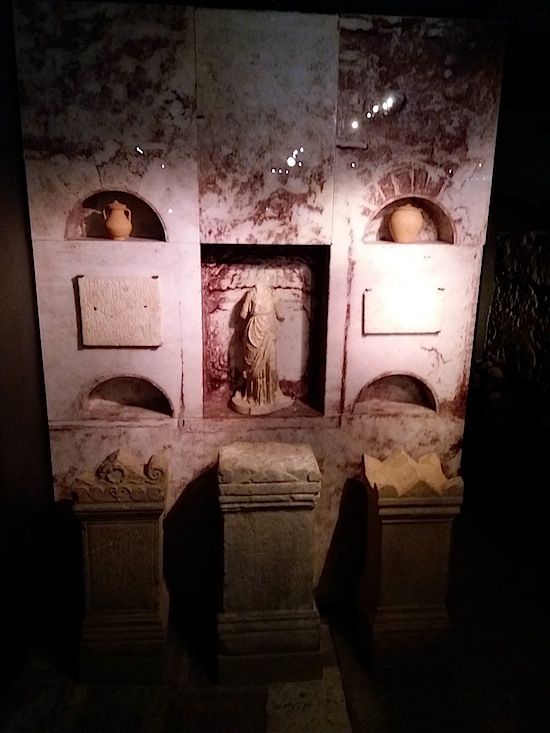
A portion of the cemetery of Valentia, from the Roman Republic
Last week, work took me to Valencia, a city on the east coast of Spain. Like many Spanish cities, it is built on layers of history, and luckily for the visitor, archaeologists digging under one of the city squares found a rich collection of remains from various periods. These have been preserved as El Centro Arqueológico de l’Almoina.
With some 2,500 square meters of remains uncovered between 1985 and 2005, it displays numerous buildings from the Roman, Visigothic, and Moorish periods. Some of them date back to the city’s founding in 138 BC during the Roman Republic as a home for retired soldiers. The city, called Valentia, expanded with typical Roman efficiency until it was obliterated, with equal Roman efficiency, by Pompey in 75 BC during the Roman civil war. It remained abandoned for more than 50 years.
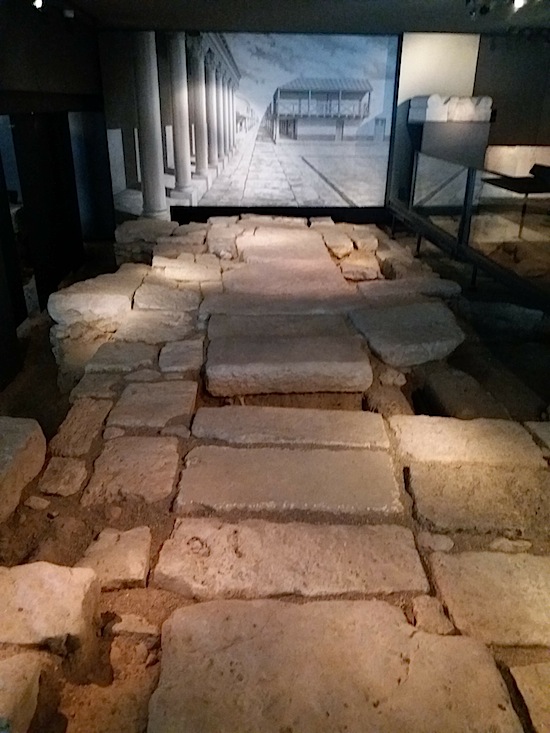
Road from the Roman Republic period
In the Late Roman Empire it became an important center for Christianity and after the empire fell, it was ruled by the Visigoths, and then fell into Muslim hands in 714 AD and being fought over bitterly during the Reconquista. Now it’s a fun seaside city with lots of cultural attractions (more on those in later posts) and a great nightlife. Hopefully Pompey won’t come back to ruin the fun.
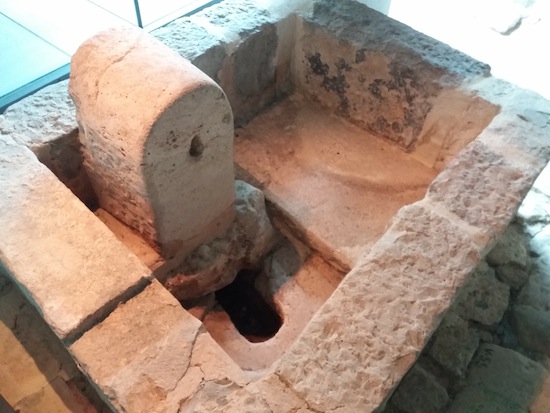
Roman water pump
Photos copyright Sean McLachlan. More below!
Sean McLachlan is the author of the historical fantasy novel A Fine Likeness, set in Civil War Missouri, and several other titles. Find out more about him on his blog and Amazon author’s page. His latest book, The Case of the Purloined Pyramid, is a neo-pulp detective novel set in Cairo in 1919.
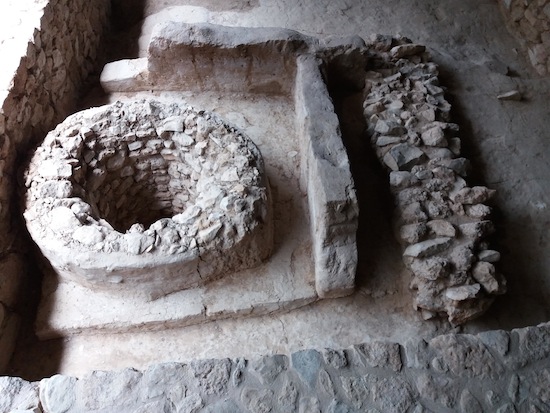
Adobe walls from the first construction of Valentia, 138 BC
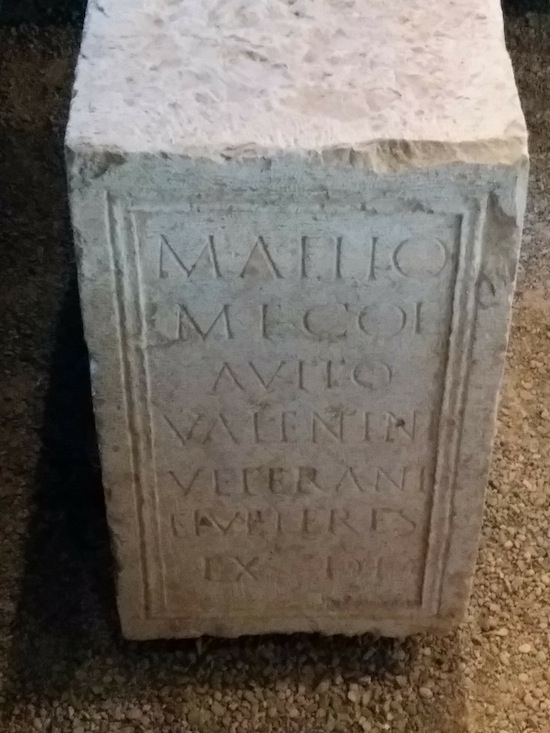
Pedestal of an equestrian statue, first century AD. The inscription
reads, “To Marcus Allius Avitus, son of Marcus, from the Collina
tribe. The inhabitants of Valentia, the veterans and the elders,
dedicate it [the statue]. By decree of the decurions.”
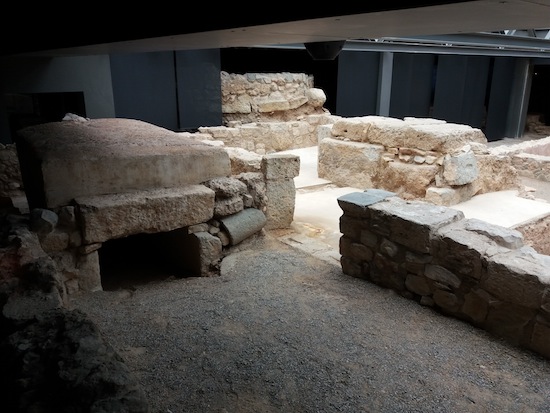
Monumental family tombs from the Visigothic period, late 6th
century AD. Placed to the north of the Visigothic cathedral
around the small church of St. Vincent the Martyr. Some of
the tombs were inscribed with the chi-rho symbol
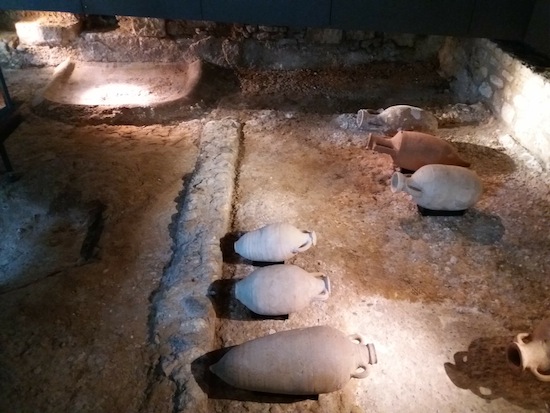
Roman factory with a press in the background, late 3rd century AD.
The amphorae were used to hold wine, olive oil, and garum (fish sauce)
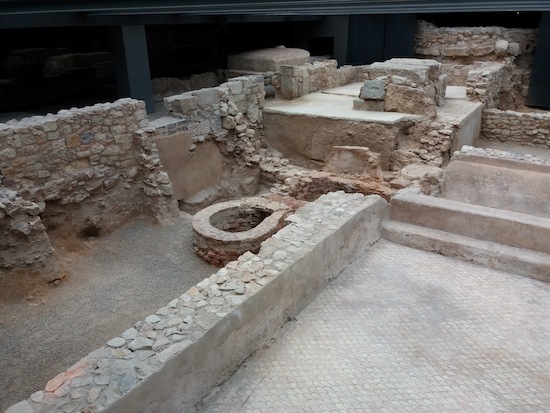
Portion of the old Roman bath, with the tiles still intact. Second century BC
